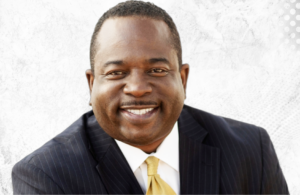Maintaining your employer brand through unexpected upheaval
UCLA Health’s Alisha W. Celestine explains the ins and outs, so to speak, of navigating chaotic moments.

Whether through executives retiring or being ousted, M&A, restructuring or a host of other factors, every communicator will eventually have to navigate a major shift in their organization. Amid these headwinds, communications professionals play a critical role in keeping the ship righted.
At Ragan’s Internal Communications Conference in Seattle this week, Alisha W. Celestine, executive director, leadership and internal communications at UCLA Health, will join a roster of leaders well-versed in chaos and calm, and the art of shaping and maintaining employer branding during upheaval.
Celestine sat down with Ragan to offer tips for mixternal communicators who find themselves walking the employer brand tightrope — keeping employees forging ahead while easing the minds of customers.
In case of emergency
Some changes, such as retirements and M&A, may offer opportunities to plan, but what happens if an unexpected change befalls a company? A CEO abruptly quits or is ousted. A public scandal sends shockwaves through the organization.
This type of upheaval may leave employees feeling anxious while presenting an off-putting image to prospects and top talent. The potential for departures and morale impacts is high.
Communicators can mitigate the negative impacts of these instances on the employer brand by working with leadership to develop consistent information and documentation that can be distributed to managers and employees who will certainly have questions about the future of the organization.
“Define what the message is going to be,” Celestine said. “At the root of that is always transparency. Have some ducks in a row before you say anything, so that you’re able to answer as many questions as you can.”
Cascading through the unexpected
To ensure as little disruption as possible, communicators must work at all levels of the organization and across every touchpoint.
Internally, messaging must be consistent across announcements that are easily accessible on intranets, in email communications and in town halls. External messaging should reflect internal in order to avoid employee concerns seeping into customer perception.
“You want to assure customers and employees that you are still the company that you know,” said Celestine.
Ensuring a smooth communications cascade plays the biggest role in reestablishing peace of mind across the board.
“The first thing people are going to do is talk to their peers and their manager,” Celestine explained . “So the first thing you want to do is equip managers with what they’re going to need to know to answer questions.”
A town hall may take several days to assemble, but in the meantime communicators can take the step of providing managers with a helpful FAQ so that everyone receives the same information.
In case of an abrupt executive exit, for instance, it’s important to get clarity on the following as soon as possible for both internal and external stakeholders:
- What’s the succession plan?
- Is there an interim leader or administration?
- Is the organization already putting a call out for a new leaders?
Preparing for the unforeseen
Unexpected shakeups are a fact of life whether communicators like it or not. Understanding what messaging will provide stakeholders, employees and customers with confidence during a crisis means maintaining awareness of their state of mind and perspective on the company when the seas are calm.
Internally, regular pulse surveys on employee state of mind can help communicators get ahead of the challenges that come with upheaval by gauging confidence in leadership and happiness with the organization.
“It goes to communicators always being connected to what employees and customers are thinking, saying and doing,” Celestine said.
Learn more from Celestine and other leaders who guide internal and mixternal comms during crises, leadership shifts and more at Ragan’s Internal Communications Conference in Seattle, Oct. 10–12.







